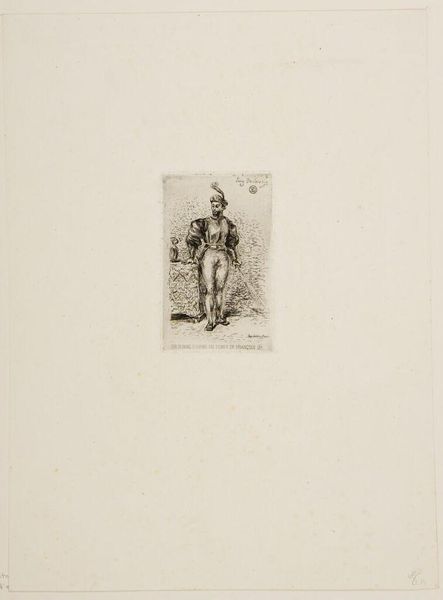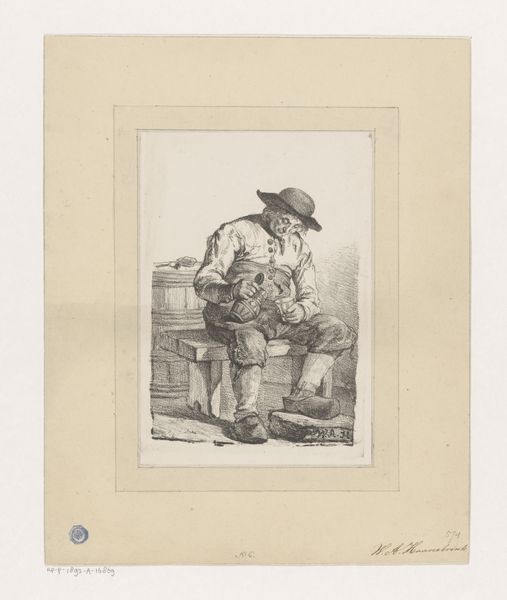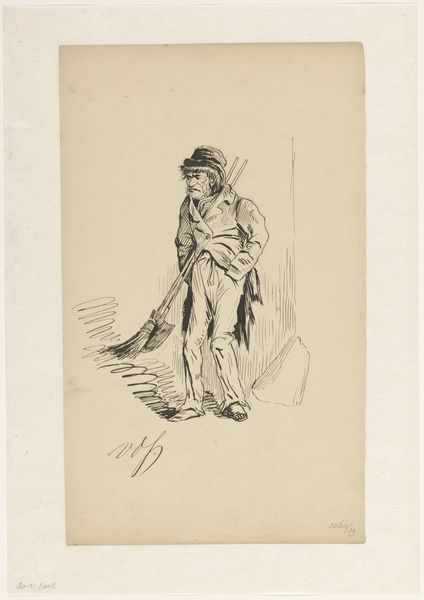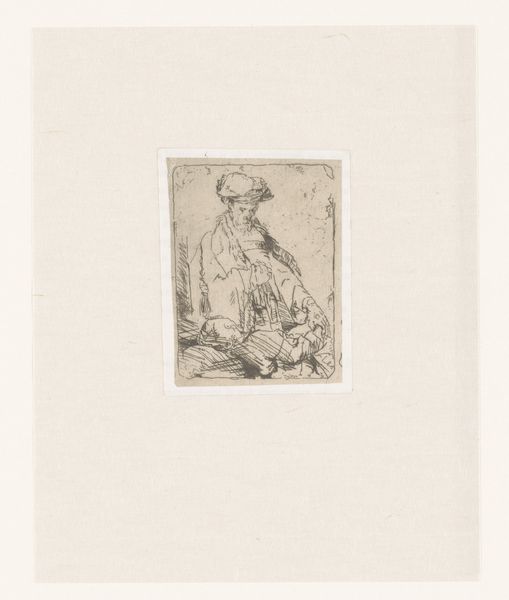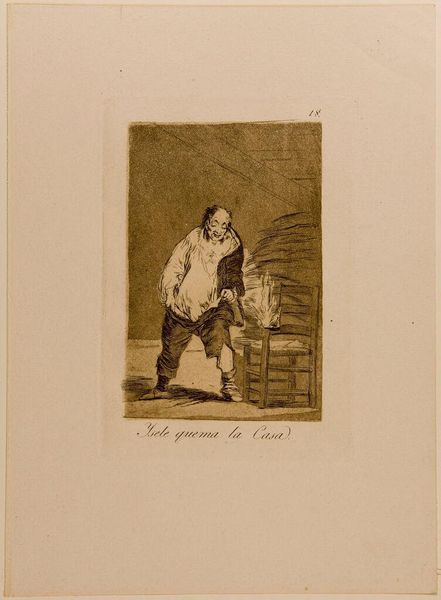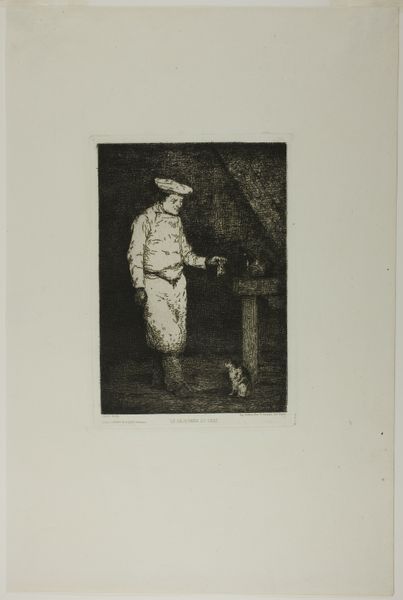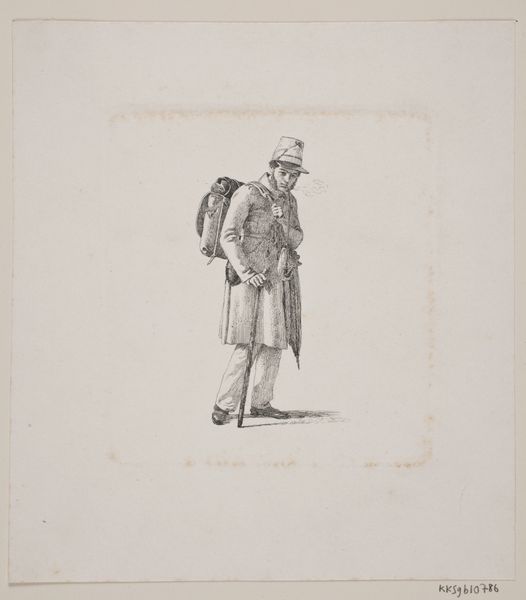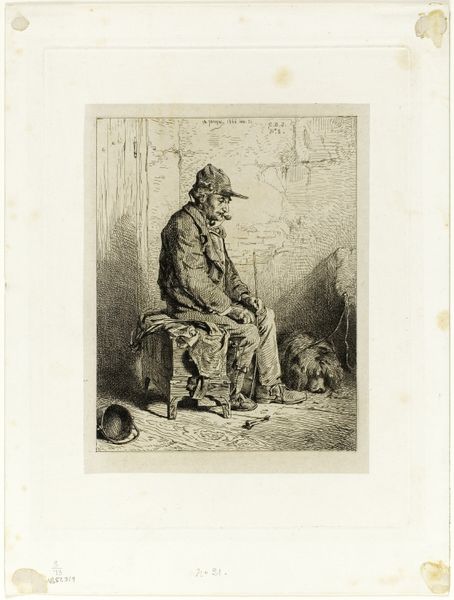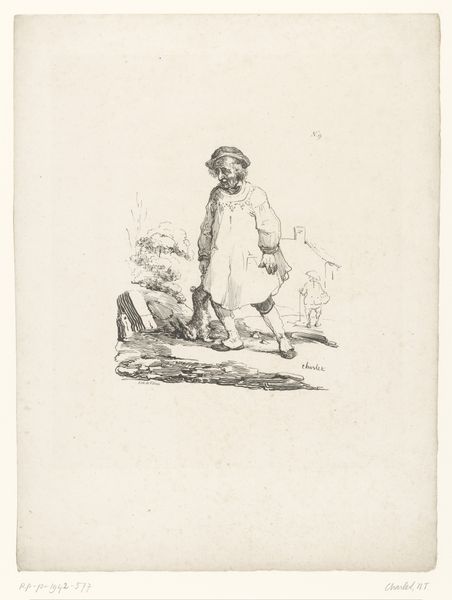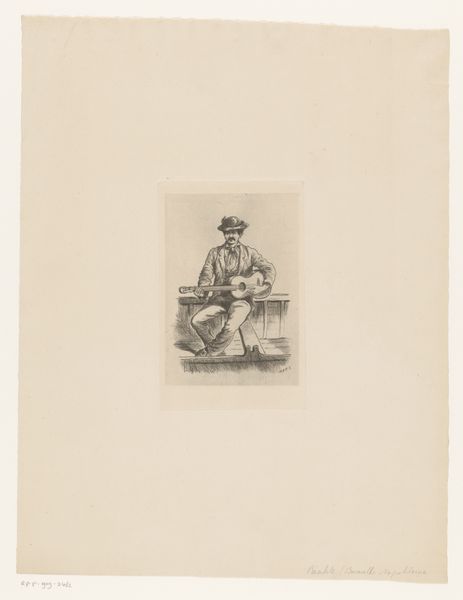
Clam Vendor 1920
Copyright: CC0 1.0
Curator: John Winkler's "Clam Vendor," now residing at the Harvard Art Museums, presents us with a compelling figure. Editor: The vendor's posture and placement within the frame suggest a quiet, almost resigned stance amidst the busyness of life. The etched lines create such evocative shadows. Curator: Winkler, who lived from 1894 to 1979, often depicted working-class individuals. This piece really speaks to the historical narratives of labor and urban life. The clam vendor's occupation places him within a specific social and economic context, one we need to explore. Editor: There’s an enduring symbolism in the shells themselves—life, birth, the feminine. The vendor as a carrier of potent symbols, perhaps unknowingly. Curator: True, we need to remember the gendered dimensions of labor during this period and how they are represented, or perhaps erased, in art. Editor: I’m struck by how Winkler uses such minimalist lines to convey such depth. It almost feels like a memory being recalled through visual cues. Curator: It makes us think about who has been historically seen and unseen, their labor recognized or ignored. Editor: It certainly gives a lot to ponder. Curator: Absolutely. It reminds us of the layers of social meaning embedded in simple images.
Comments
No comments
Be the first to comment and join the conversation on the ultimate creative platform.
